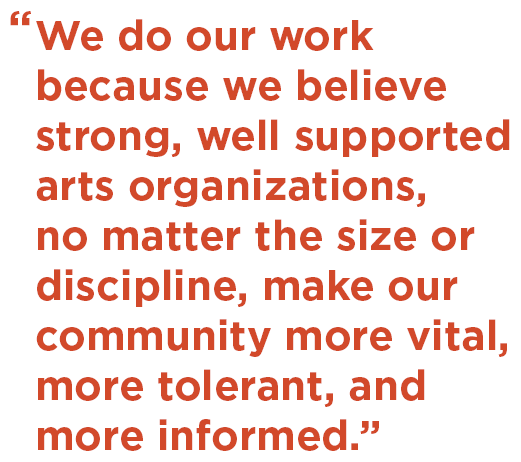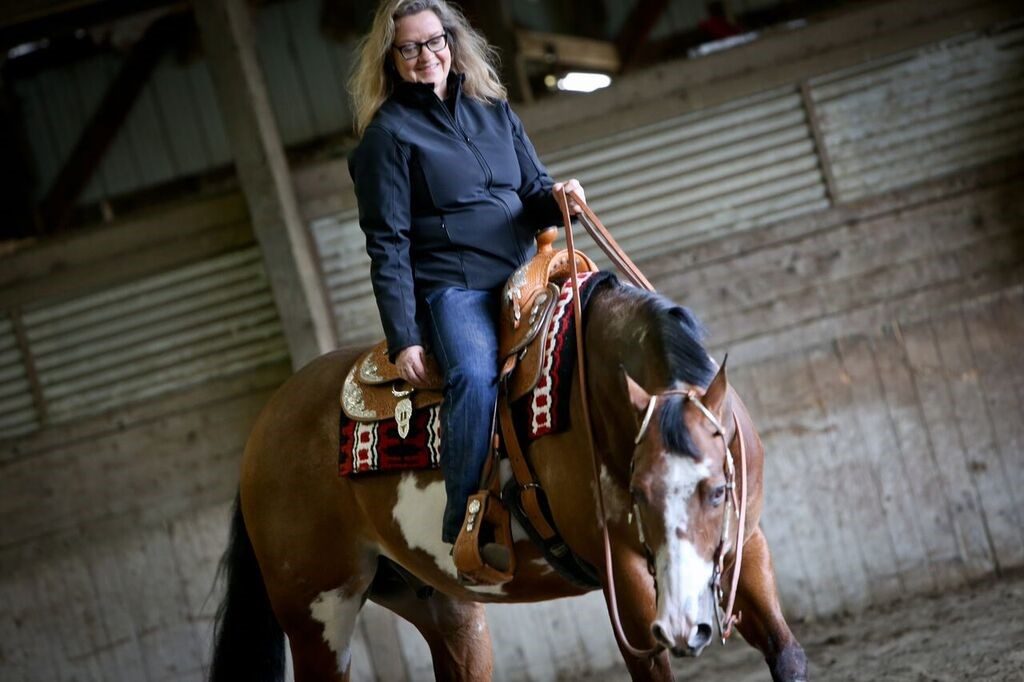Behind the scenes with our Interim CEO
Sue Coliton recently stepped into the role of ArtsFund Interim President & CEO. Sue is among the most respected executives active in the Seattle arts community, a reputation she built during 15 years leading the Paul G. Allen Family Foundation’s philanthropic programs, and enhanced with years of consulting for many arts organizations, including ArtsFund. Sue’s skills and experience, along with her familiarity with the region’s cultural sector, make her the ideal person to lead us our 50th anniversary year. We recently sat down with Sue to learn more about her background and her approach to leading ArtsFund into the future.
What initially got you involved with ArtsFund? And, what draws you to ArtsFund in this moment? I’ve was fortunate to join ArtsFund’s extended family about 20 years ago. I moved to Seattle in 1999 to work at the Paul G. Allen Family Foundation. Not long after I arrived, Peter Donnelly invited me to join the ArtsFund Allocations Committee. I served on the committee for more than a decade. Through three passionate leaders and ongoing program refinements, I have seen ArtsFund remain relevant to the arts organizations and communities it serves. I’m drawn to ArtsFund now because it is continuing to respond to changes in its operating environment. Organizational evolution is both challenging, risky, and exciting. And I’m honored to be involved at this pivotal time, as ArtsFund celebrates 50 years of impact and envisions its future.
You started your professional life during the NEA culture wars, and have a storied career in arts philanthropy, including high profile regional leadership at the Paul G. Allen Family Foundation and Philanthropy Northwest, and national leadership on the Boards of Grantmakers of the Arts and Americans for the Arts. What changes have you seen in arts philanthropy and philanthropy in general that inform your approach to leading ArtsFund?
The dynamic changes in philanthropy in general have been well documented – the desire for measurable impacts and more systemic solutions to problems, the focus on social justice and participatory grantmaking, the new uses of technology to mobilize support, and the rise of impact investing are a few. Arts philanthropy has experienced similar changes. The arts are beginning to be better understood as contributors to positive social impacts (see ArtsFund’s Social Impact of the Arts study), art programs and practices are increasingly recognized as addressing social justice issues, and the arts are being leveraged to drive equitable community development. Arts organizations are using technology for tracking and sharing these outcomes with their donors.
These positive trends in arts philanthropy highlight the many impacts the arts have on our lives. I believe in focusing on those impacts as ArtsFund’s leader. We do our work because we believe strong, well supported arts organizations, no matter the size or discipline, make our community more vital, more tolerant, and more informed. This belief has guided my professional life.
There’s an awe-inspiring amount of local and national board leadership on your resume (including most recently, being the gubernatorial-appointed chair of the Washington State Arts Commission!) – what do you think are the most important contributions board members can make to a nonprofit?
Nonprofit board members can make a significant difference to an organization when they bring their best thinking and their networks to the table. Too often, some members hang their problem-solving hat at the door and consider themselves “not working” when engaging with nonprofits. Board members are most effective when they are immersed in the work – helping to solve strategic problems, opening doors to pro-bono expertise, and making connections to possible donors. It is hard work to be a board member – but it’s worth it!!
What about you might surprise your colleagues?
I hold a World Championship in western pleasure riding from the 2015 Pinto World Championship Show!

